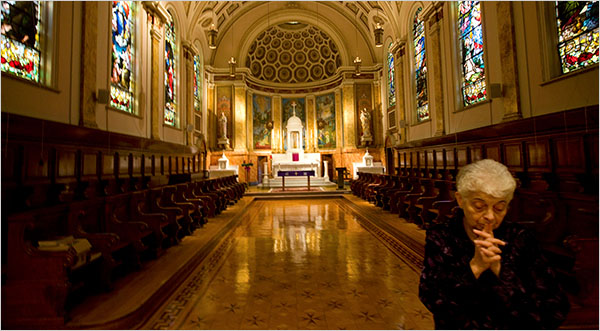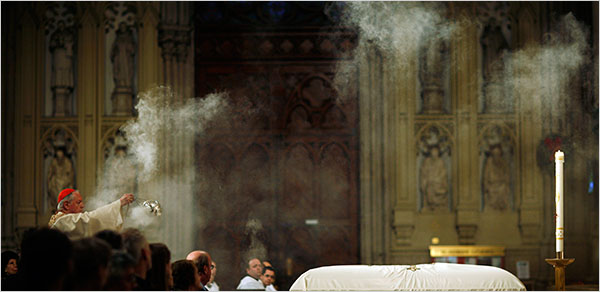 In my corner of the Catholic Church–the Northeast and Mid-Atlantic region generally, Brooklyn specifically–parish and church and monastery closings are practically part of our ritual. A big part of the problem is the vocations crisis, also the economic crunch, and to a degree church participation. But there is also the demographic shift–the United States has lots of Catholics where there are no churches and schools, and fewer Catholics, practicing and otherwise, where we have wonderful infrastructure.
In my corner of the Catholic Church–the Northeast and Mid-Atlantic region generally, Brooklyn specifically–parish and church and monastery closings are practically part of our ritual. A big part of the problem is the vocations crisis, also the economic crunch, and to a degree church participation. But there is also the demographic shift–the United States has lots of Catholics where there are no churches and schools, and fewer Catholics, practicing and otherwise, where we have wonderful infrastructure.
But that rationalization doesn’t ease the heartache of stories like this one from David Gonzalez of The New York Times, who reports on the shuttering of the Convent of Mercy here in Brooklyn. Not only have the sisters been doing God’s work for nearly 150 years, but it is a beautiful, sacred space, and also home to a favorite nun, Sr. Camille D’Arienzo (in the photo in the chapel, which may be torn down by developers), who is also a nationally known advocate for abolishing capital punishment.
Here is the lede:
Behind the red-brick walls encircling the Convent of Mercy in Brooklyn, generations of nuns have taught the illiterate, sheltered the homeless and raised orphans. They are known as the Walking Sisters, ministering in the community as well as inside their convent.
Now, after 146 years, it is time for the small band of sisters, most of them retired, to walk away from the convent. The leadership of their order, the Sisters of Mercy, decided to shutter the place and scatter the sisters to other homes and nursing facilities after realizing it would cost more than $20 million to fix serious structural and accessibility problems in the fortresslike building on Willoughby Avenue in Clinton Hill.
This has been a season of heartbreak and anger for these women, who thought the motherhouse would be their last home and the sisters their constant companions. Now they, the rescuers of lost children, feel like orphans themselves.
“It kind of hurts in a lot of ways,” said Sister Francene Horan, who came to the motherhouse in 1950 to teach kindergarten. “A building is one thing. This is a home, the place you knew would give you a place to stay. It’s like saying your parents died and you don’t have a home anymore.”

